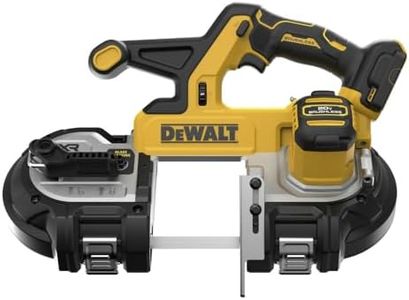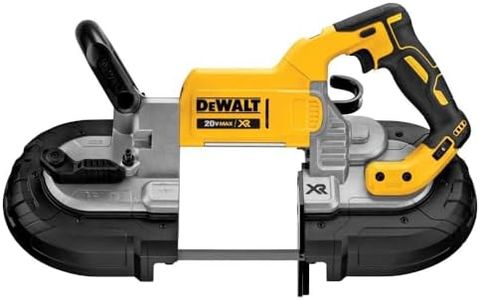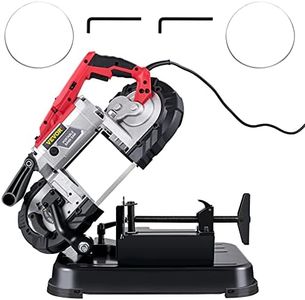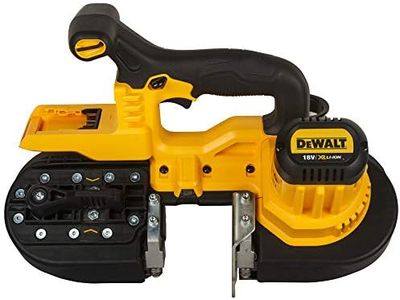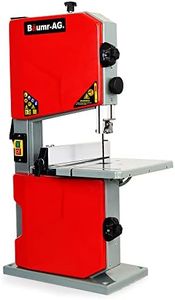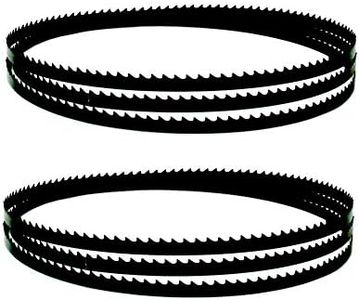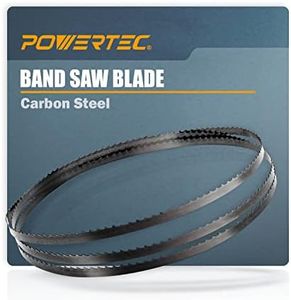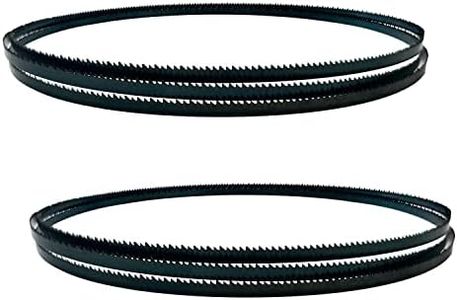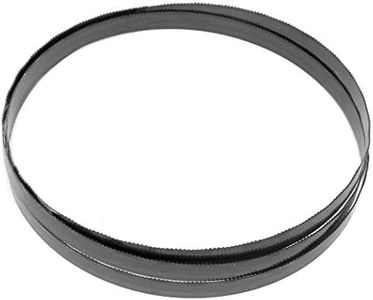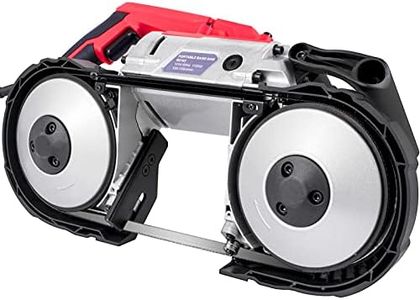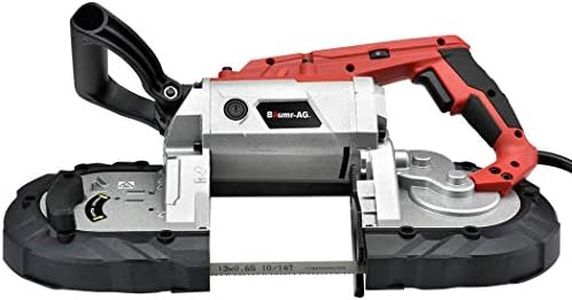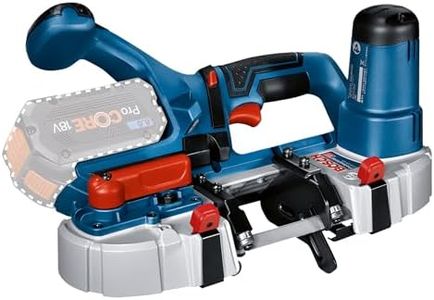We Use CookiesWe use cookies to enhance the security, performance,
functionality and for analytical and promotional activities. By continuing to browse this site you
are agreeing to our privacy policy
10 Best Band Saws
From leading brands and best sellers available on the web.By clicking on a link to a third party's website, log data is shared with that third party.
Buying Guide for the Best Band Saws
Choosing a band saw can be a rewarding task when you consider what you plan to cut, how often you'll use the tool, and the kind of space you have available. Band saws are versatile cutting tools used in woodworking, metalworking, and even woodworking hobby projects. Paying attention to key specifications can make the difference between a smooth, enjoyable cutting experience and constant frustration. Start by thinking about the size and type of materials you’ll be working with and whether you need a stationary or portable model.Throat CapacityThe throat capacity is the distance between the blade and the vertical frame of the saw. This measurement tells you how wide a piece you can cut, which is especially important for larger or awkwardly shaped workpieces. Tabletop models usually have smaller throats, while floor models are designed for larger materials. If you mostly work with small, narrow pieces, a compact throat is sufficient, but if you foresee handling wide boards or ambitious projects, look for a larger throat capacity.
Maximum Cutting Height (Resaw Capacity)The cutting height, sometimes called resaw capacity, refers to the tallest piece you can cut through. This is particularly significant if you plan to resaw thick wood or need to cut larger workpieces. Smaller saws might cut up to 4–6 inches tall, while larger, more robust models may handle 12 inches or more. Match the max cutting height to the typical thickness of material you'll use, keeping in mind that occasional thicker cuts will be impossible with a short cutting height.
Motor PowerMotor power determines how easy it will be to cut through dense or thick materials. It is generally rated in horsepower (HP) or amps. For light, occasional woodwork, less power (around 1/3 to 1/2 HP) can be sufficient. For regular use, tougher woods, or any metal, more power (1 HP and above) is helpful to guarantee smooth cuts and avoid overworking the saw. Think about your workload and choose a motor strong enough for your typical projects.
Blade Width and TypeBlades can be swapped out depending on the cut; their width and tooth type affect the kind of cuts you can make. Wide blades are steadier and better for straight cuts and resawing, while narrow blades are best for curves and intricate work. Also, band saw blades come with different teeth per inch (TPI) ratings; fewer TPI for fast, rough cuts, and more TPI for fine, smooth cuts or metal. Assess your projects and decide if you’ll need a range of blades, or if a single type suits your regular tasks.
Table Size and AdjustabilityThe saw's table is the surface on which your material rests as you cut. A larger table gives more support for big workpieces and makes it easier to keep them stable and accurate. Table adjustability – the ability to tilt – lets you do angled cuts and more creative work. If you expect to cut big boards or do angled work, prioritize a larger, tilt-capable table. For small craftwork, a compact table may be all you need.
Portability and Build QualitySome band saws are built to sit in a workshop, while others are portable for jobsites or moving around your space. Stationary models tend to be heavier and sturdier, offering more stability for frequent or demanding projects. Portable models trade off some stability for convenience and compactness. Think about where and how you’ll use your saw when deciding between portability and rock-solid build quality.
Dust CollectionCutting generates a lot of sawdust, especially during big projects, which can affect visibility, accuracy, and your health. Many band saws have built-in dust ports that can be connected to a vacuum or dust collector to help keep your workspace clean. If you’ll be using your band saw indoors or for extended periods, look for effective dust collection options.
